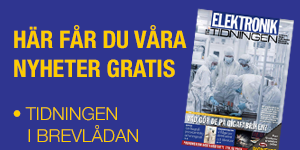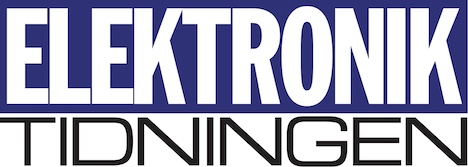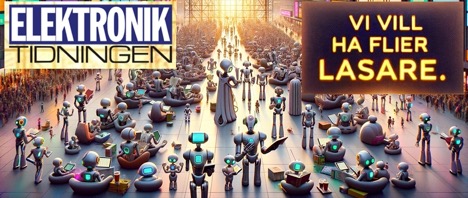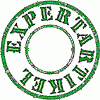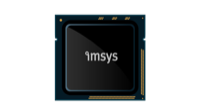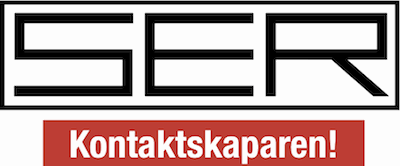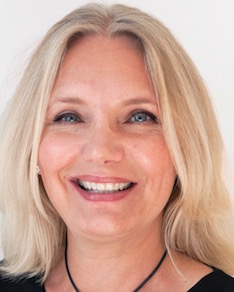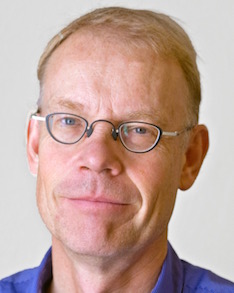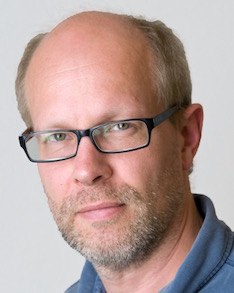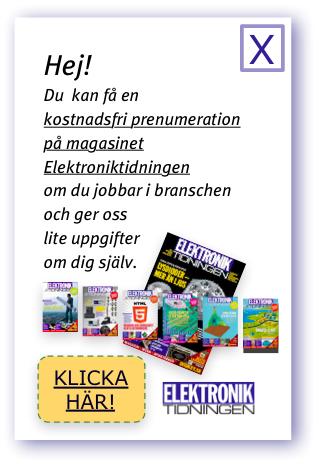 The Arboga company Optoga has developed an LED module that integrates smart communication and can operate the LED matrix with 230V directly from the electricity grid. The order came a year ago - from one of the world's larger luminaire manufacturers. In March, the module will be ready to be installed in hotels. Then it is also radically more energy-efficient than today's alternative.
The Arboga company Optoga has developed an LED module that integrates smart communication and can operate the LED matrix with 230V directly from the electricity grid. The order came a year ago - from one of the world's larger luminaire manufacturers. In March, the module will be ready to be installed in hotels. Then it is also radically more energy-efficient than today's alternative.
– This is great fun. Everyone is incredibly surprised when they realize what we can achieve, says Stefan Larsson, CEO of Optoga.
The comment spontaneously comes after the question of what response he received when he traveled around Europe to sell the new module to larger luminaire manufacturers. In a short time he has come to visit Italy, Spain, Greece, England and Denmark.
 |
| Stefan Larsson |
– So far, there has been a problem with Dali because such solutions take up a lot of space. Now no extra is needed, but one can actually develop stylish design for this too.
Dali is the communication standard for lighting systems that is completely dominant in professional contexts, and that Optoga uses in the module. Dali is wired, very stable and very widespread, especially in Europe, but also further south.
– You have to remember that installers should not have to be engineers to make the lighting work, it should only work. Dali has succeeded to a great extent with this, says Stefan Larsson.
At the same time, the lighting industry, as mentioned, wrestles with clumsy solutions. They consist of a large number of small LEDs and a host of huge boxes that handle the communication and the LED-drivers.
– Now we have built everything in a tiny format. We have been active for a year and it has been very, very secret.
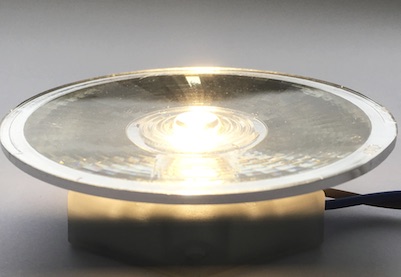 |
| The LED module |
The assignment included creating an extremely energy-efficient and functional drive that does not compromise details such as color rendering and color temperature - nor is it more expensive than conventional LED drivers.
The result is a hexagonal module, about 6 millimeters high and 50 millimeters in diameter, which combines low voltage to power a processor and 230V AC to drive the LEDs. Thus, the creation, named Clara, requires no transformer between the mains and the LED.
Simply explained, the alternating voltage is first rectified. Then, the voltage is divided into four branches of about 60 V, which drives the LED matrix. It is a common so-called COB - Chip on Board.
A challenge in the design work has been to create a completely safe solution - after all, it is 230 V that is sent straight into the LED. Here Optoga has chosen not to use a circuit board in FR4, which otherwise is the most common material.
The disadvantage of FR4 is the very poor thermal conductivity. This makes the material unsuitable because it is essential that the LED and other components stay within the specified working temperature in order for the module to function reliably.
– We have instead chosen to work with aluminum circuit boards with a built-in safety layer that has good heat transfer, that withstands heat and is not breaking down with high voltages.
Our solution has a very thin safety layer. The design has created some concern for some potential customers. No one wants to risk having an alternating voltage of 230 V in the luminaire.
– That's how it is. Many direct AC solutions also have a reputation for being sensitive to surges, but we have developed protection against it for a long time.
– We test according to the current standard of Intertek, which is independent. In addition, we ourselves have tested the isolation layer before production with voltages between 3000 and 4000 V, so we know that our design is safe.
WHY DALI?The Elektroniktidningen asks Stefan Larsson three questions: • Why did you choose the Dali protocol? – Dali has been around for a long time and is hugely established among all installers and electricians. In the professional context there is no alternative today. • What about standards like Zigbee or Bluetooth Mesh? – Wireless protocols will surely have an important roll in the future, but it will take some time before they are established and standards are set. At least for the moment is wireless more for the consumer market. • How widespread is Dali today? – I would say that larger hotels have between 10 and 20 percent Dali-based, then there are a lot of special solutions such as night light and various emergency lighting. But with Dali2 you can suddenly get everything in the same solution without creating problems because the different elements are not compatible. |
The processor that manages the communication with the lighting is fed separately via the Dali bus 16 V, which is converted to 3.3 V.
Another detail that devoured many hours in the lab has been to reduce the power consumption in standby. Here, the goal has been to achieve already in advance the stricter requirements that the EU plans to induce on electronic products, such as mobile chargers.
Today, the regulations say that a completely switched off electronic unit should draw below 0.5 watts. Within a short time, a new standard will come up indicating a maximum value of 0.35 watts.
– We must be below that value. To show that we are ahead, we have developed a unit that only draws 0.25 watts of standby, says Stefan Larsson.
In terms of energy, it makes a big difference for a larger hotel that can have tens of thousands of lamps. At the same time, one and the same Dali bus, with its 16 V and 250 mA, can drive considerably more units if they draw considerably lower power.
Parallel to this, the EU organization Lighting Europe - which controls the regulatory framework for lighting - is working on obtaining protocols that further reduce energy consumption. It's about the light being where you are. For example, the lights should be switched off when you exit a room and turned on when you enter. According to Lighting Europe, it is a measure that can reduce the energy consumption of a lighting solution by as much as 80 percent.
– Our solution is compatible with Dali2, so we have already reached that goal, Stefan Larsson points out.
Dali2 is a newer version of the Dali protocol, that is on the market. The main difference is the structure of the software attack, which means that everything can be verified more easily.
In the first Dali version, the focus was solely on the standardization of drives for luminaires. With Dali2, the protocol has been expanded to include the control page.
This means that standardized components such as potentiometers, push-button modules as well as light and presence sensors are also standardized.
With the new module, Optoga turns to something called "courtesy light" but also other things that are needed in hotels, offices and other places. It is about improving the technology to create a functional and inviting light.
– We have changed focus. We were early with LEDs and quickly got volumes. You have reported about our relations with Ikea and others, but almost two years ago we ended our contacts with the consumer industry because we saw that it is difficult to compete in that segment with low prices from China and India.
– For us, it is now about delivering new exciting products that we can charge for.
Previously wireless and a number of flicker-free solutions are available on the company's competence list. Now Dali can also be added to the list, and next, Optoga should integrate Dali into a number of platforms other than the small hexagonal LED module that is currently in the spotlight. It is about fluorescent light fittings, facade lamps and other things that should start communicating.
Who the original client is, Optoga cannot reveal. However, it is clear that it is a large manufacturer of lighting fixtures.
– We will supply LED modules in the company name, which is quite common in our industry.
The plan is that the first modules will start to be installed in hotels already in March - Stefan Larsson can not reveal more.
– But we have financed the entire development ourselves and can sell it freely. We manufacture and supply, says Stefan Larsson, and notes:
– What we developed is probably the world's most compact Dali2 node with integrated light source. As we know, there is no product close in size, power consumption, light performance and price.
